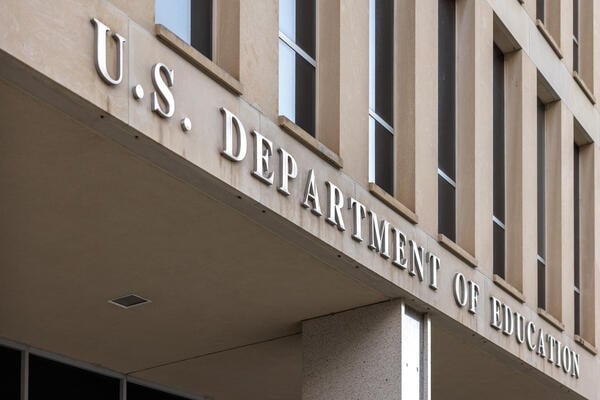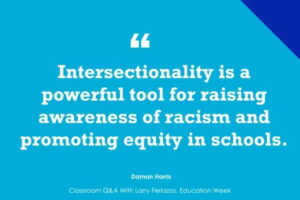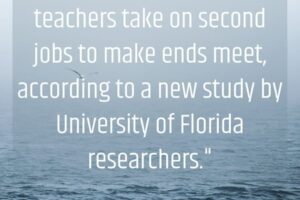
ED Opens Door to Student Loan Cap Negotiations
Higher ed leaders, advocates and officials appeared to walk away from the Education Department’s first round of talks on the One Big Beautiful Bill Act and its time-sensitive overhaul to the student loan system with cautious optimism.
The negotiations over new repayment plans and which programs qualify for various loan-cap levels concluded Friday and will begin again in November. These meetings are a key step in the lengthy and complex process known as negotiated rule making, which the department has to go through in order to issue new policies. Many of the provisions in the legislation take effect July 1, 2026.
When department officials first came to the table Monday, they made it clear that OBBBA had been fairly direct and left little room for negotiation—particularly when it came to defining which postbaccalaureate programs would qualify for higher loan caps. Their plan would include only 10 programs, they said. But by the end of the week, the tone of the conversation had shifted.
After heated comments from a handful of committee members Tuesday afternoon and a series of closed-door meetings Wednesday morning, ED proposed a one-year expansion to the definition. They called it a compromise but stressed that if committee members didn’t agree to this deal, there wouldn’t be a second chance. But conversations stretched on throughout Wednesday afternoon and into Friday, and no unanimous agreement had been reached.
Some members of the negotiating committee—which represents stakeholders ranging from public, private and for-profit institutions to taxpayers, loan servicers and legal aid organizations—told Inside Higher Ed that many questions remain unanswered and they are still skeptical of the department’s latest plan. Regardless, they viewed it as a step forward.
“We appreciate the department’s willingness to continue discussion on this important topic,” Bennett Boggs, an alternate committee member and Missouri’s commissioner of higher education and workforce development, told Inside Higher Ed. “Even beyond student loan levels, these designations speak to broad issues pertaining to economic and workforce development.”
Andy Vaughn, president of Alliant International University and the committee member representing proprietary institutions, said the counteroffer “shows that they’re open to discussion.”
Throughout the week, multiple committee members submitted their own proposals. None were explored in depth before the public, except one plan, presented by the committee member representing taxpayers, was referenced a few different times. Under that plan, any program within the same two-digit Classification of Institutional Programs code would qualify as professional so long as it took three or more years to complete and leads to licensure.
The rule-making committee is slated to reconvene for a second round of talks Nov. 3 to Nov. 7, though the government shutdown could complicate those plans. If the advisory committee doesn’t reach consensus on the changes, the department is free to move forward with its own proposal, which will be subject to public comment.
Tamy Abernathy, director of the department’s higher ed policy group, also celebrated the week as one of progress.
“You all have found your voices and are not shy to share them with us. We really appreciate that, because the whole purpose of negotiated rule making is for us to get it right, and you to help us get it right,” she said. “You can tell by all of the back-and-forth edits that we’ve been making that you have really made a difference.”
Here are three key takeaways from the first week of rule making.
What Counts as a Professional?
As expected, the most contentious issue throughout the week was which programs higher than a bachelor’s degree would count as professional.
Students in programs that make the cut will be able to borrow an aggregate of up to $200,000, whereas students in programs labeled graduate will only be able to take out $100,000 in federal loans. This significant difference in loan value makes the definition a high-stakes regulation that could cost colleges millions of dollars in revenue. (Previously, students could essentially take out unlimited loans so long as it did not go over the total cost of attendance, regardless of which program they were enrolled in.)
The legislation cites language in the Higher Education Act that says a professional degree signifies that a student has “a level of professional skill beyond that normally required for a bachelor’s degree” and adds that “professional licensure is also generally required.” It then goes on to list 10 examples, such as medicine, law and pharmacy. But the HEA explicitly notes that those examples are nonexhaustive.
So the key question last week became, how much room for negotiation did the existing definition leave?
Department officials argued very little and stuck largely to the HEA text. But they made one significant change, proposing to include only the 10 degree programs listed in the HEA definition.
Committee members quickly took issue with this change. They questioned if it would hurt the legal standing of the new regulation, since it made a major change to the language outlined by Congress. They also noted that such a narrow list could be detrimental to the development of certain health-care professionals who needed loans to afford to enter high-cost, high-demand careers like clinical psychology.
So the department came back with an alternate proposal that for one year—from July 1, 2026, to June 30, 2027—the definition would include any program that met the three standards so long as the college had designated it as professional prior to July 4, 2025, the date OBBBA was signed.
This opened a whole can of worms among committee members, who went back and forth with department officials over whether its latest proposal was clear, functional and adhered to Congress’s original intent.
Jenna Colvin, a committee member representing private nonprofit institutions, asked what exactly would qualify as “designated” and worried that certain master’s-level programs would be at risk since they can’t formally label themselves as professional in existing government reports.
Alex Holt, the member who represented taxpayers and submitted his own alternate plan, worried the definition might be too broad and costly for taxpayers. Vaughn, who represented for-profit institutions, noted that a one-year extension was not a long-term solution for critical health-care programs.
Jill Desjean, director of policy analysis at the National Association of Student Financial Aid Administrators, watched from the sidelines all week and said she was worried about the legal standing of ED’s latest proposal. But she also noted that the department alluded Friday that it might be willing to discuss other proposals, like Holt’s, after all.
“ED is saying we’ll come back and talk about it next week. So, maybe they are willing to look at a definition other than the interim solution, if that’s not where the committee would get to a consensus,” she said.
Scott Buchanan, executive director of the Student Loan Servicing Alliance, was also in attendance throughout the week and said that because the definition is still “in flux,” a lot could happen behind the scenes between now and the next meeting.
Regardless, reaching a consensus, and doing so as soon as possible, will be very important, Buchanan added.
“Obviously, this law comes into effect on July 1, 2026, and in order to give certainty to both schools and also students as they’re applying for enrollment, it’s important for us to get clarity on that as soon as possible,” he said.
How Has the Shutdown Affected Transparency?
The government shut down Wednesday, two days into the week of meetings. But after some back and forth, the department stuck with its plan to continue with negotiations. That decision meant, in part, that the committee members themselves had to share what was happening during the meetings and what proposals were on the table.
Normally questions, alternate proposals, amended versions of the regulatory text and other meeting materials are posted to a landing page at ed.gov. But ever since the federal government went dark, the department website has gone without updates.
Jeffrey Andrade, deputy assistant secretary for policy, planning and innovation, told Inside Higher Ed that there was nothing he and department staff could do to provide updated documents to the public until the government reopened. He suggested reaching out to the press team to request the documents individually, but many members of the ED communications team are furloughed.
Buchanan said that while everyone wants to have transparency on these issues, the lobbyists, think tanks and advocacy groups that would be most likely to use the documents can usually get them from the committee members. Plus, a bulk of discussions occurred behind closed doors, which means there wouldn’t even be anything for the department to post from those talks.
And Vaughn added that while a lack of access would have been a bigger problem had the department pushed a consensus vote Friday, he hopes it will all be resolved by the time they reconvene for a second meeting.
In the meantime, he said, “It’s really up to us to communicate to our constituents and make sure they’ve got the latest information.”
What Changes Were Made on Repayment Plans?
The other primary issue that will come up for discussion again in November is how borrowers pay off their loans. Under OBBBA, as of July 1, 2026, almost all income-driven repayment plans, with the exception of a new plan known as Repayment Assistance (RAP), will end.
And while multiple sources say that the department’s regulations for future payments largely mirror the text of the legislation, there are some questions still to be answered about the transition process for existing borrowers.
For example, under the law, existing borrowers have until July 1, 2026, to apply for the one existing plan that will remain—Income-Based Repayment. But in order to be grandfathered into the program, borrowers must apply before July 1. For some, this may be manageable. But others, specifically those on Parent PLUS loans, could face a long, complicated process that could be difficult to complete before the deadline.
Aissa Canchola Bañez, policy director at the Student Borrower Protection Center, explained that under the department’s current regulations, in order for these borrowers to enroll in IBR, they would have to consolidate their loan, then apply for Income-Contingent Repayment, be approved and make one ICR payment. Only then could they apply for IBR and get grandfathered in.
“When you are looking at a less than one year window of time and consolidation already takes several months, that is just convoluting and extending a process that is already long enough and very cumbersome,” Canchola Bañez said. “And we are in the midst of a government shutdown that could further exacerbate the backlog, so that just kind of raises the stakes.”
Ashley Naporlee and Tamar Hoffman, the committee members representing legal assistance, consumer protection and civil rights organizations, repeatedly urged the department to simplify the process, but by the end of the week, they had not successfully amended the department’s plan.
Source link



